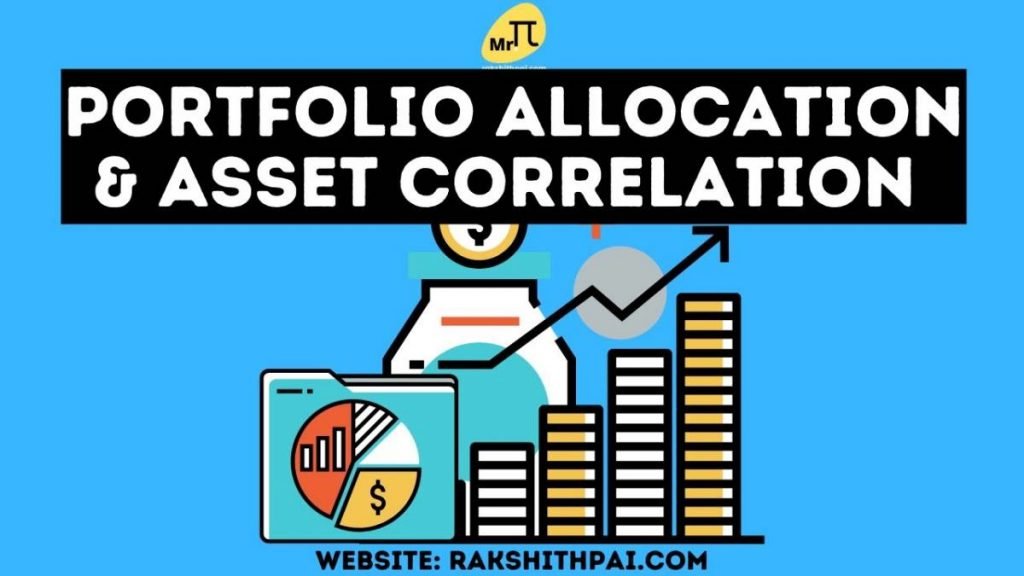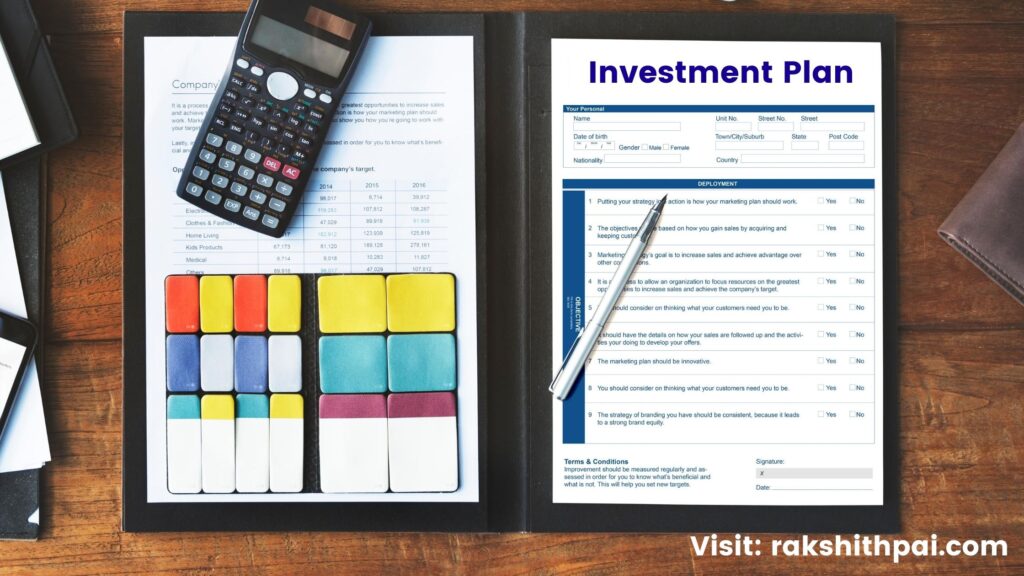Table of Contents
Introduction:
Diversifying our investments into various assets such as equity, precious metals like gold and silver, bonds, real estate, foreign funds, and others. We are minimizing our risk whilst trying to maximize our investment returns. It’s to not put all your eggs in the same basket.
You have to diversify your investments. For all we know is that we do not know how dynamic the current financial system is. And, we will never know what comes until it does. Look for yourself, the current covid crisis hit hard the real-estate industry the most! And, if you were one amongst those who held huge rental properties, all leveraged! What will you do?
How to allocate your portfolio?
There’s no foolproof strategy. Allocation is all yours to decide. It’s a combination of scientific analysis and a pinch of art. But, I can’t leave it such. Hence, here’s my advice.
If your financial situation is good, meaning… if you have no debt or very few financial obligations or financial burdens. Then, do consider equity, and other more volatile assets for investment, because with volatility comes more returns at times. And, if you already have debt or other financial obligations then reduce your equity investment and allocate some portion into bonds, gold & silver, and properties.
I truly believe in India’s capability to create wealth with respect to stock market investing and, hence, will definitely have “equities” in my portfolio no matter what my financial situation is.
What is a good portfolio allocation?
You might have heard the concept where one suggests allocating your Equity investments based on your age by simply deducting your age from100 and whatever balance is left should be your equity investment of the total portfolio. Allocating investments into Equity and other volatile and risky ventures based on one’s age makes no sense.
For example, Mr.X is 72 years old and is a multi-millionaire. He has no financial obligations or burdens and is living a comfortable lifestyle. He wants to invest in equities cause he believes that equity is the best asset class to invest in. Would you suggest him to invest just 28% of his entire portfolio into equities? In another case, Mr. Y is a young lad who just came into the workforce and is 25 years. Mr. Y has a Student loan, Car EMI, and other financial obligations. Now, based on the earlier logic of suggesting an individual to invest in Equities based on age! WIll you suggest Mr. Y to invest in Equities?
Answer for both the above question can be ‘Yes’ or ‘No’. We can’t say! Because this is one such decision that cannot be generalized. Based on your ability to take risks and our current financial conditions. At times, even having a full 100% “Crypto” portfolio might also seem not to be a bad idea. (not suggested!)
It’s all based on you! Your ability to take risks and your expectations on returns. And, it is suggested to have a diversified portfolio with not one asset class given complete focus.
How do I determine my portfolio allocation?
As said earlier. It’s all based on your risk-return analysis. And, there’s no one standard formula or method to address this question. And, your optimal asset allocation is the combination of investments, ranging from the most aggressive to the most conservative, that will generate the total return you require overtime. Stocks, bonds, and cash or money market securities are included in this mix. The percentage of your portfolio you allocate to each is determined by your time horizon and risk tolerance.
Below, I have given two prominent approaches to the said topic:
What is a 70/30 portfolio?
This investment strategy aims at total return by investing in a diverse portfolio of stock and fixed income asset classes with a target risk of 70% equities and 30% fixed income assets. This is done to concentrate on growth and safety. By investing 70% in growth-oriented asset classes such as Equity and investing the balance 30% in safety-oriented asset classes such as debt or bonds for regular and consistent earnings.
What is 1-Two-7 portfolio approach?
Under the 1-2-7 approach, we follow the same logic as said above and for the same purpose. But, here we dedicate 10% of our portfolio towards safe assets such as Gold, Silver and a portion as cash and cash equivalents. And, the next 20% will be invested into the broader market such as “Index fund” or “ETF Investing”. This way, we make earnings alongside the growth of the market whilst not taking more risk.
The balance 70% of the portfolio will be invested aggressively into the Equities and bond market for growth and higher returns. This part of the investment is further bifurcated in two parts wherein, your investment is segregated as “Growth Investing” and “Value Investing”. To know more about this method. Click here!
What is the best portfolio for retirement?
For retirement benefits, you need to consider investing in those assets which give better returns and it should also be an option that gives considerable tax benefits. I have a list for you to consider. Check the below-attached table.
| Sl.No | Particular | Section (for reference) | Tax implications |
|---|---|---|---|
| 1 | Provident Fund (PF) | 80C | Deductions upto Rs. 1.5 lakh. |
| 2 | National Pension Scheme (NPS) | 80C + 80CCD | Deductions upto Rs. 1.5 lakh. Additionally, Rs. 50k deductions allowable. |
| 3 | Senior Citizens Saving Scheme (SCSS) | 80C | Deductions upto Rs. 1.5 lakh. |
| 4 | Mutual Fund Investing | 80C | Deductions upto Rs. 1.5 lakh. (Under ELSS funds) |
| 5 | Fixed Deposit | 80C | Deductions upto Rs. 1.5 lakh. |
| 6 | Unit Linked Insurance Plan (ULIP) | 80C | Deductions upto Rs. 1.5 lakh. Additionally, returns are exempt u/s 10(10D) |
| 7 | Sovereign Gold Bond (SGB) | - | Only interest in taxable |
| 8 | Government Securities | 80C | Deductions upto Rs. 1.5 lakh. |
| 9 | Hybrid Funds Investing | 80C | Deductions upto Rs. 1.5 lakh. |
| 10 | Savings - Regular & Recurring account | 80TTA | Deduction upto Rs.10,000 in interest income. |
What does asset correlation mean?
Each asset acts and reacts to various news and situations differently. And, this difference is what makes them a favorable hedge against one another. Asset correlation reduces the volatility in your portfolio. This is what fund managers are paid for. They spend their entire professional career allocating investments into various assets that have zero, positive or negative correlation as per their likes.
For example, gold goes up when equities are down, hence a negative correlation. The same is true for bonds towards equity. Another example of negative correlation would be when interest rates are down, the liquidity flush into the equity market is greater. Just like what we saw during the Covid bull run.
Zero correlation or positive correlation is when the two assets do not react to one another or react simultaneously in the same manner. Now, that being said. Build your portfolio accordingly.
What is the best correlation for a portfolio?
Correlation is a mathematically-based method for selecting investments that, when combined, produce the highest returns for a given degree of risk. The theory seeks the optimal connection between the expected return and the volatility of several possible investments. If the anticipated return correlation between two assets is 1.0, they are perfectly connected. If one gains 5%, the other gains 5%. If one falls 10%, the other also falls 10%.
For more information, check our YouTube video:
Disclaimer: All the information on this website is published in good faith and for general information purpose only.









